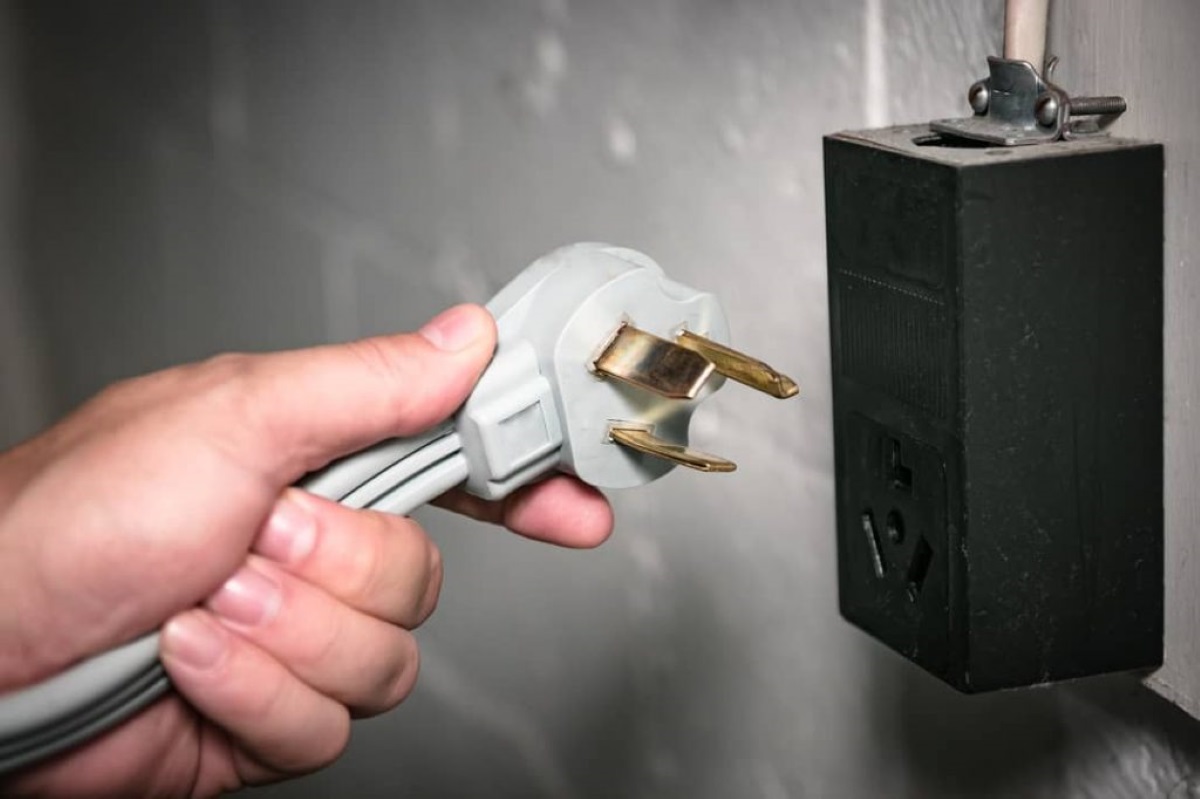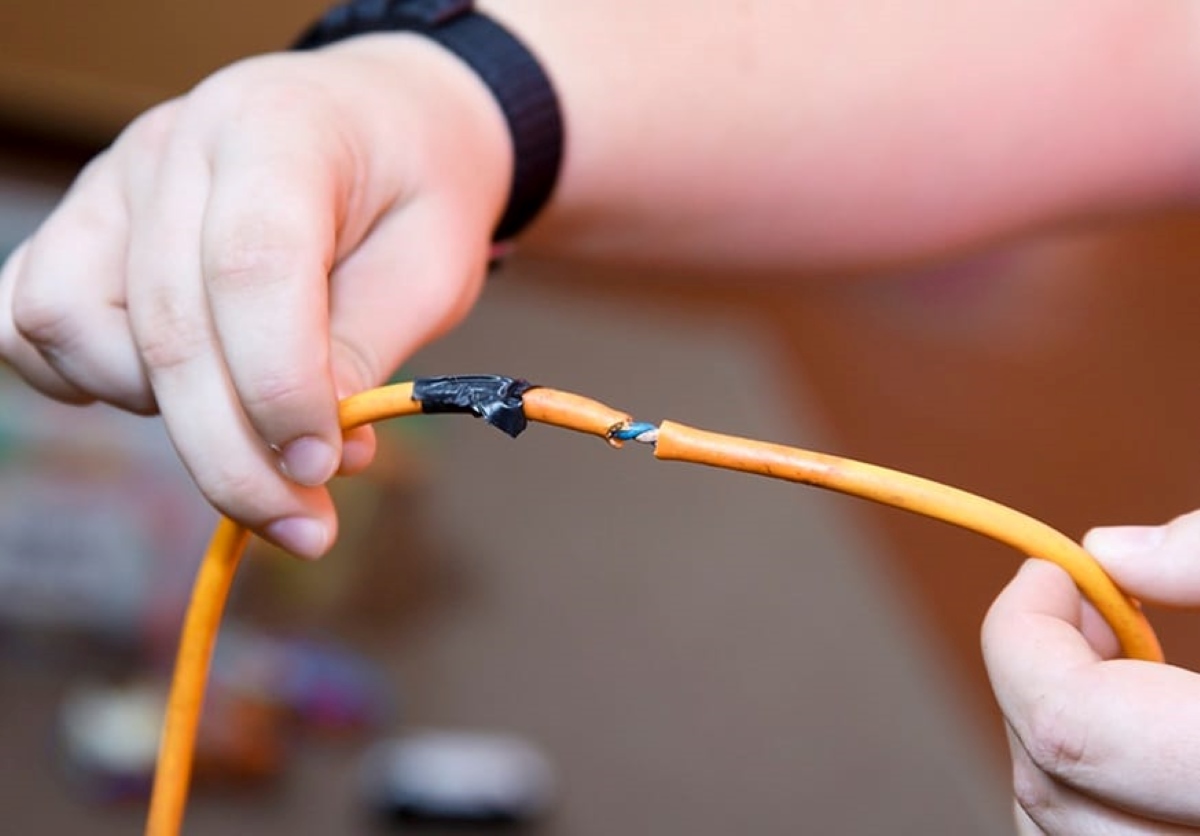Home>Articles>How Do I Tell What Side Of An Electrical Cord Is Positive Or Negative


Articles
How Do I Tell What Side Of An Electrical Cord Is Positive Or Negative
Modified: December 7, 2023
Learn how to determine the positive and negative sides of an electrical cord in this informative article. Find helpful tips and tricks for identifying proper polarity.
(Many of the links in this article redirect to a specific reviewed product. Your purchase of these products through affiliate links helps to generate commission for Storables.com, at no extra cost. Learn more)
Introduction
Welcome to the world of electrical cords, where the flow of electricity powers our devices and keeps us connected. Electrical cords are an integral part of our daily lives, allowing us to power up our appliances, charge our electronic gadgets, and bring light and life to our surroundings. But have you ever wondered how to tell which side of an electrical cord is positive or negative?
Understanding the polarity of an electrical cord is crucial to ensure the safe and efficient operation of the devices we connect to it. While it may seem like a daunting task, determining the positive and negative sides of an electrical cord is actually quite simple. In this article, we will explore various methods to help you identify the positive and negative sides of an electrical cord, ensuring that you can plug in and power up with confidence.
Key Takeaways:
- Identifying the positive and negative sides of an electrical cord is crucial for safe and efficient device operation. Look for markings, inspect wire color coding, or use a multimeter to ensure correct connections.
- Prioritize safety when handling electrical cords to prevent accidents and damage. Follow proper handling techniques, seek professional help when unsure, and always prioritize caution to ensure a secure environment.
Understanding Electrical Cords
Before we delve into the methods of identifying the positive and negative sides of an electrical cord, let’s first understand what an electrical cord is and its importance in our daily lives.
An electrical cord, also known as a power cord or mains cord, is a flexible cable that connects an electrical device to a power source, allowing the flow of electrical energy. It serves as a crucial link between the device and the power outlet, ensuring that electricity can be safely transmitted to power up our appliances, electronics, and other equipment.
Electrical cords are typically composed of several components, each playing a vital role in its functionality. The central part of an electrical cord is the conductor, usually made of copper or aluminum, which carries the electrical current. Surrounding the conductor is the insulation layer, typically made of materials such as PVC or rubber, to provide protection and prevent electric shocks. In addition, there may be an outer sheath or jacket that offers further insulation and protection against physical damage.
Now, you may wonder why it is important to identify the positive and negative sides of an electrical cord. The polarity of an electrical cord determines the direction in which electricity flows. Certain devices, such as batteries, motors, and electronics, require correct polarity for optimal performance and to function as intended. Incorrectly connecting a device to the wrong polarity can lead to malfunctions, damage to the device, or in some cases, safety hazards.
By being able to identify the positive and negative sides of an electrical cord, you can ensure that your devices are connected properly, maximizing the efficiency and safety of their operation.
Methods to Determine the Positive and Negative Sides
Now that we understand the importance of identifying the positive and negative sides of an electrical cord, let’s explore some methods that can help us achieve this.
Method 1: Look for markings or labels on the cord
Many electrical cords come with markings or labels indicating the polarity. These markings can be in the form of plus (+) and minus (-) signs, or they may use words such as “positive” and “negative.” Look closely at the cord itself, especially near the plugs or connectors, to see if any such markings are present.
If you find any markings or labels, you can easily determine which side of the cord is positive and negative, ensuring correct connections to your devices.
Method 2: Inspect the color coding of the wires
In some electrical cords, the wires inside may be color-coded, with one wire being a different color from the others. In general, the color coding convention for AC power cords is that the wire with a black, red, or brown color is considered the hot or positive wire, while the wire with a white or light color is the neutral wire. It is important to note that not all cords follow this color convention, so it is crucial to verify the manufacturer’s specifications or consult an expert if you are unsure.
By identifying the wire with the distinct color, you can determine the positive and negative sides of the cord.
Read more: What Electrical Cord Do I Need For My RV
Method 3: Examine the prongs or connectors
Another method to determine the positive and negative sides of an electrical cord is to examine the prongs or connectors. Depending on the type of cord, one of the prongs or connectors may be slightly larger or have a different shape compared to the other. The larger prong or non-standard connector is typically associated with the neutral or negative side, while the smaller prong or standard connector is associated with the hot or positive side.
This method can be particularly useful when dealing with cords that do not have markings or color-coding.
Method 4: Utilize a multimeter or voltage tester
If the previous methods do not provide clear indications or if you simply want to have a more accurate determination of the polarity, you can use a multimeter or voltage tester. These electrical testing devices can measure the voltage and polarity of the electrical cord by taking readings at the connectors or wires.
Using a multimeter or voltage tester requires some knowledge of their operation, so it is important to follow the manufacturer’s instructions and take necessary safety precautions. If you are unfamiliar or uncomfortable working with these devices, it is recommended to seek assistance from a professional.
By employing these methods, you can confidently determine the positive and negative sides of an electrical cord, ensuring correct connections and optimal performance of your devices.
Safety Precautions and Tips
When working with electrical cords, it is essential to prioritize safety to prevent accidents, injuries, or damage to your devices. Here are some important safety precautions and tips to keep in mind:
Importance of safety when dealing with electrical cords
Electricity can be dangerous if not handled properly. It is crucial to understand the potential risks and take necessary precautions to ensure your safety and the safety of those around you. Accidental electrical shocks, fires, and damage to appliances are just a few of the potential hazards that can arise from mishandling electrical cords. By practicing safety measures, you can minimize these risks and create a secure environment.
Read more: How To Tell Age Of Electrical Cord
Handling electrical cords properly
- Always ensure that your hands are dry and that you are standing on a dry surface before handling electrical cords.
- Do not yank or pull cords forcefully, as this can damage the insulation or the connection points.
- Avoid running cords across high-traffic areas or under rugs, as this can lead to tripping hazards or overheating.
- Regularly inspect cords for any signs of wear, fraying, or damage. If you notice any issues, discontinue use and replace the cord with a new one.
- When unplugging a cord, pull it by the plug rather than yanking on the cord itself.
- Keep cords away from heat sources, water, and sharp objects that can cause damage.
- Use surge protectors or power strips with built-in circuit breakers to protect your devices from power surges.
Seeking professional help when unsure
If you are unsure about identifying the positive and negative sides of an electrical cord or if you have any concerns regarding electrical safety, it is always best to seek professional help. Electricians or experts in the field can provide guidance, perform necessary tests, and ensure that electrical connections are made correctly and safely.
Remember, when it comes to electrical safety, it is better to be cautious and seek assistance when needed, rather than taking risks that can result in serious consequences.
By following these safety precautions and tips, you can handle electrical cords with confidence and ensure the safety of both yourself and your devices.
Conclusion
Understanding the positive and negative sides of an electrical cord is essential for safe and effective operation of our devices. By utilizing various methods such as looking for markings or labels on the cord, inspecting the color coding of the wires, examining the prongs or connectors, or utilizing a multimeter or voltage tester, we can easily determine the polarity of an electrical cord.
It is important to remember that safety should always be a top priority when dealing with electrical cords. Handling cords properly, following safety precautions, and seeking professional help when unsure are crucial steps to prevent accidents and ensure a secure environment. Electrical safety is not something to be taken lightly, and it is always better to be cautious and seek assistance when needed.
Now armed with the knowledge of identifying the positive and negative sides of an electrical cord, you can confidently connect your devices, knowing that you have taken the necessary steps to ensure their optimal performance and your safety.
So next time you come across an electrical cord, take a moment to identify the positive and negative sides, and power up your devices with confidence!
Frequently Asked Questions about How Do I Tell What Side Of An Electrical Cord Is Positive Or Negative
Was this page helpful?
At Storables.com, we guarantee accurate and reliable information. Our content, validated by Expert Board Contributors, is crafted following stringent Editorial Policies. We're committed to providing you with well-researched, expert-backed insights for all your informational needs.














0 thoughts on “How Do I Tell What Side Of An Electrical Cord Is Positive Or Negative”